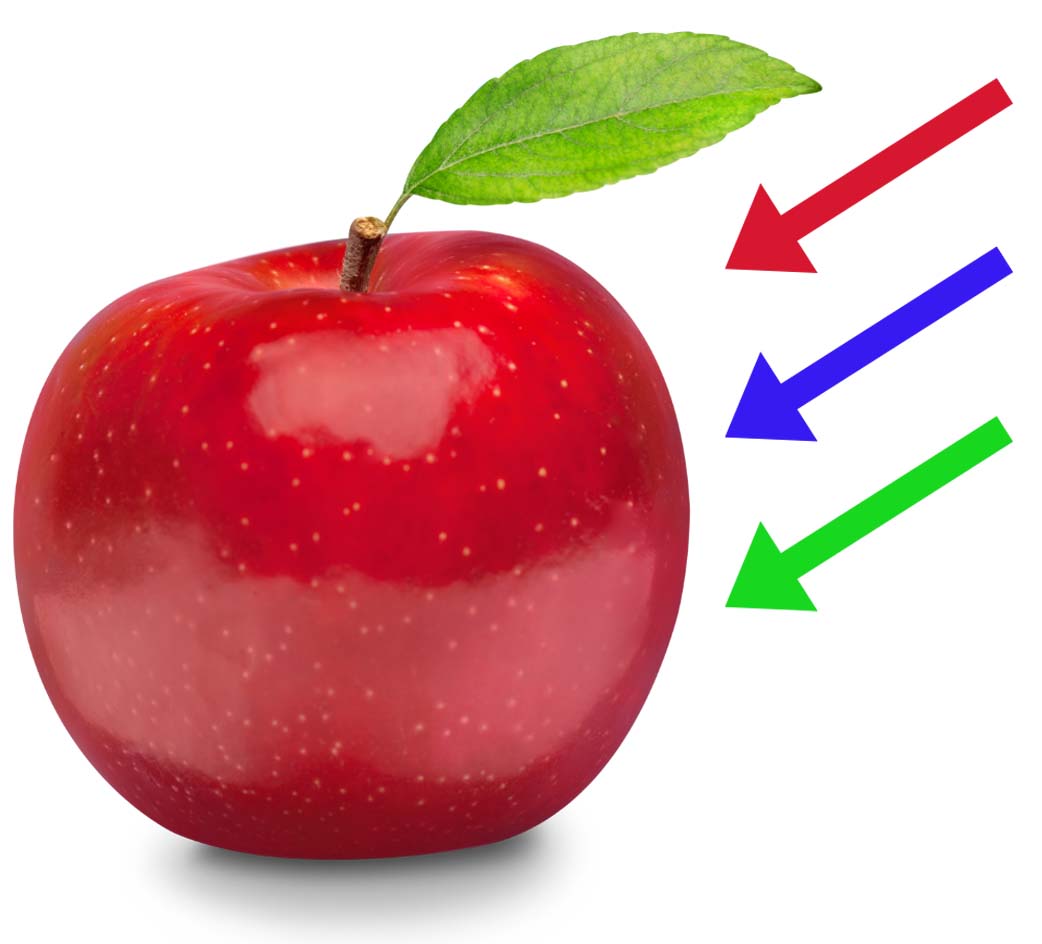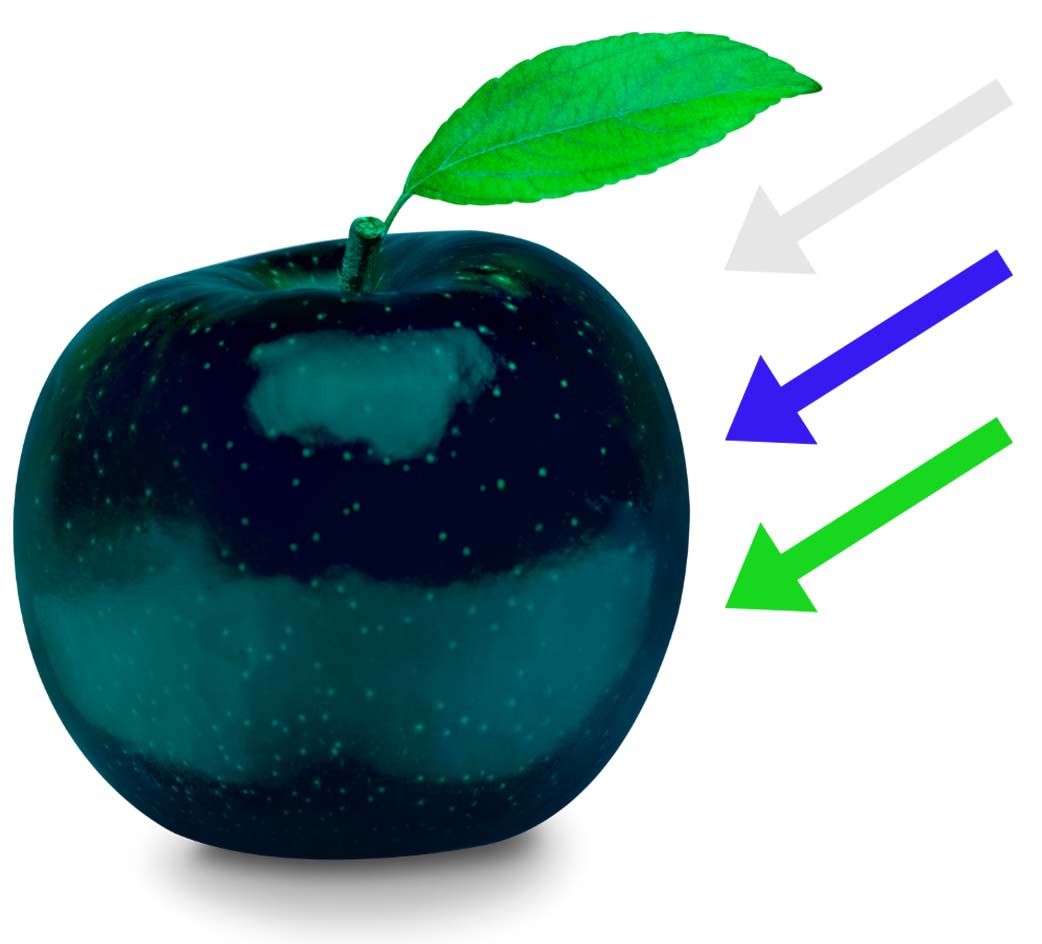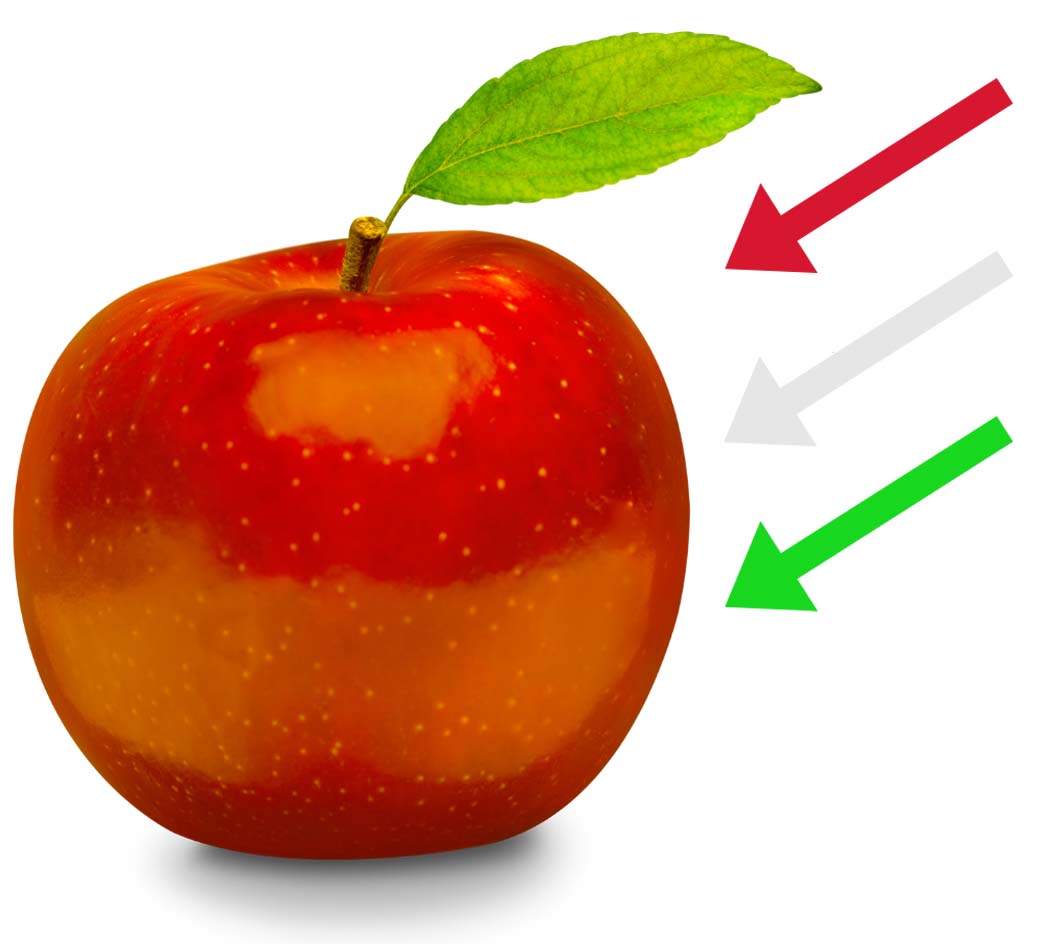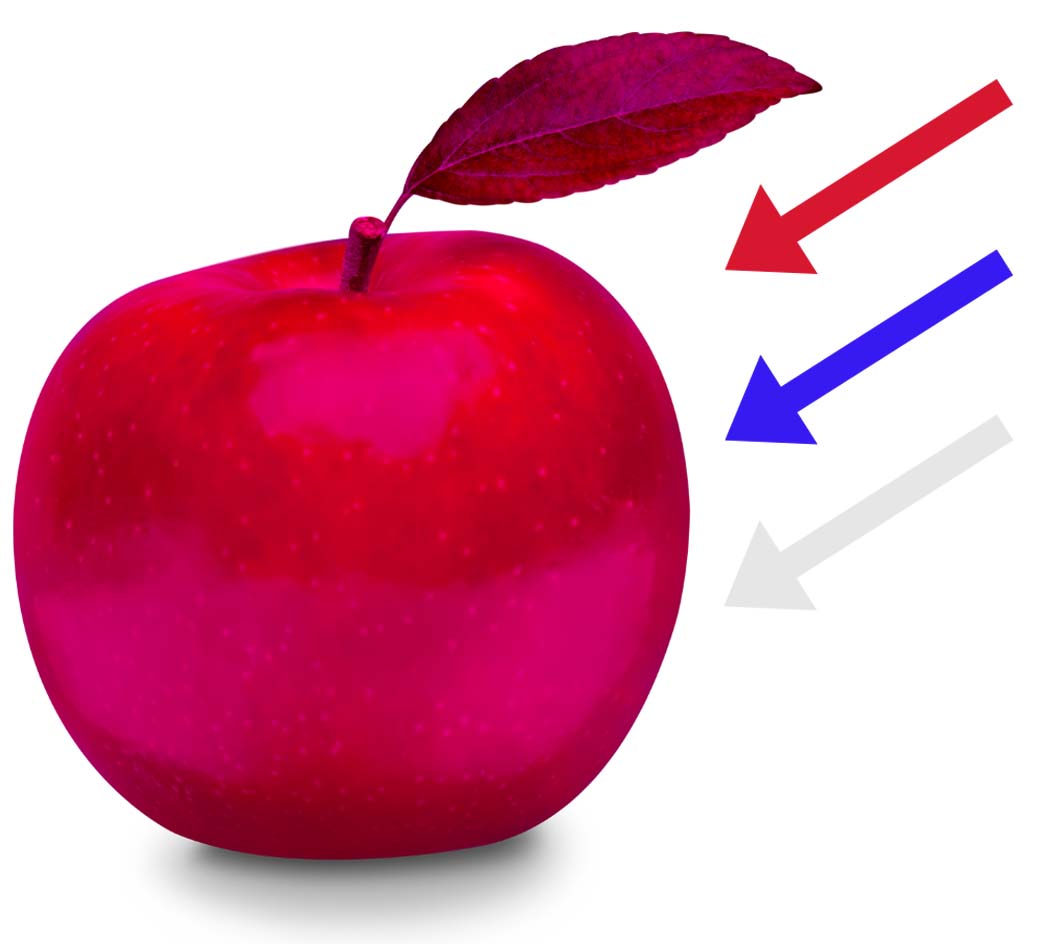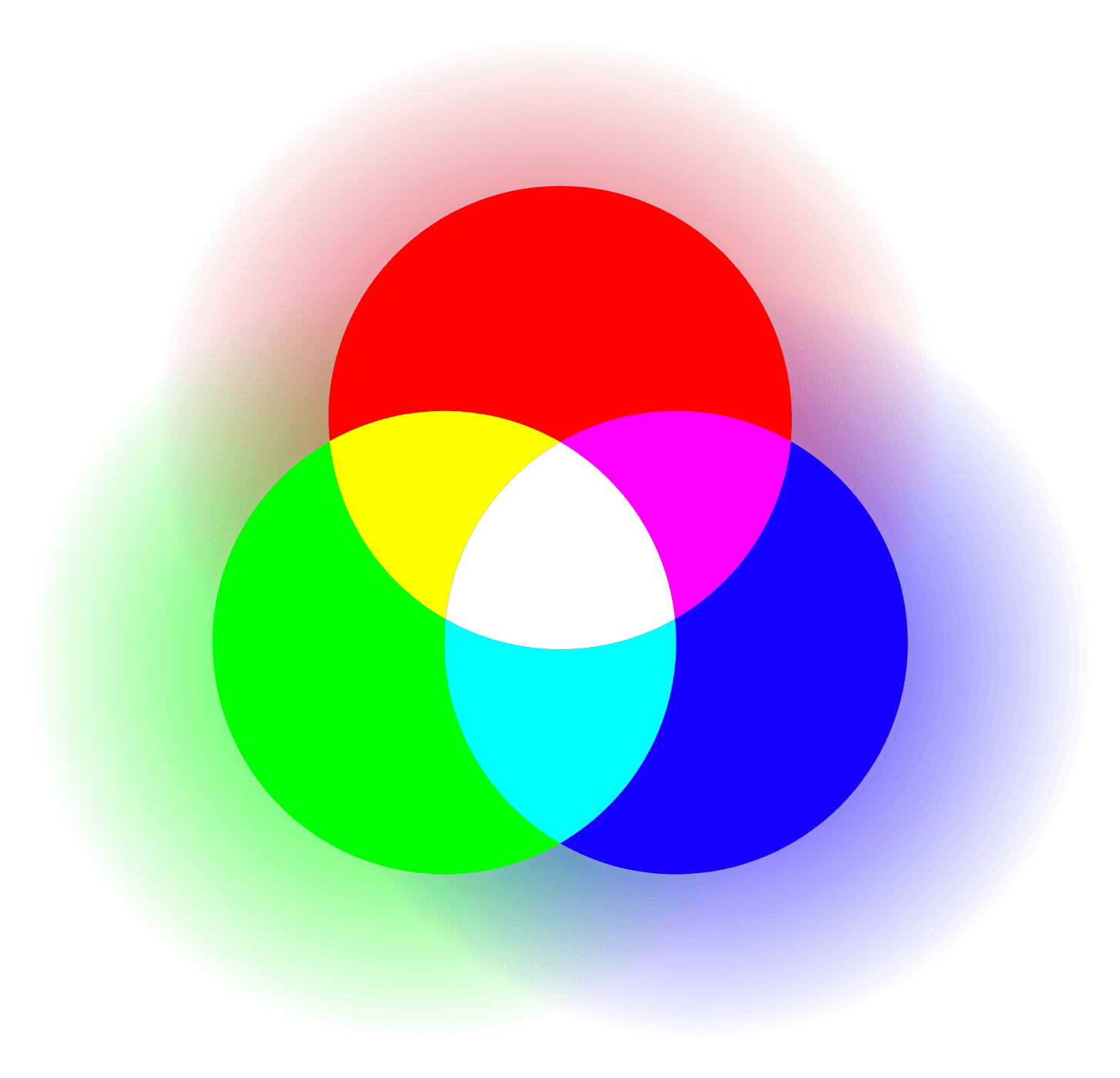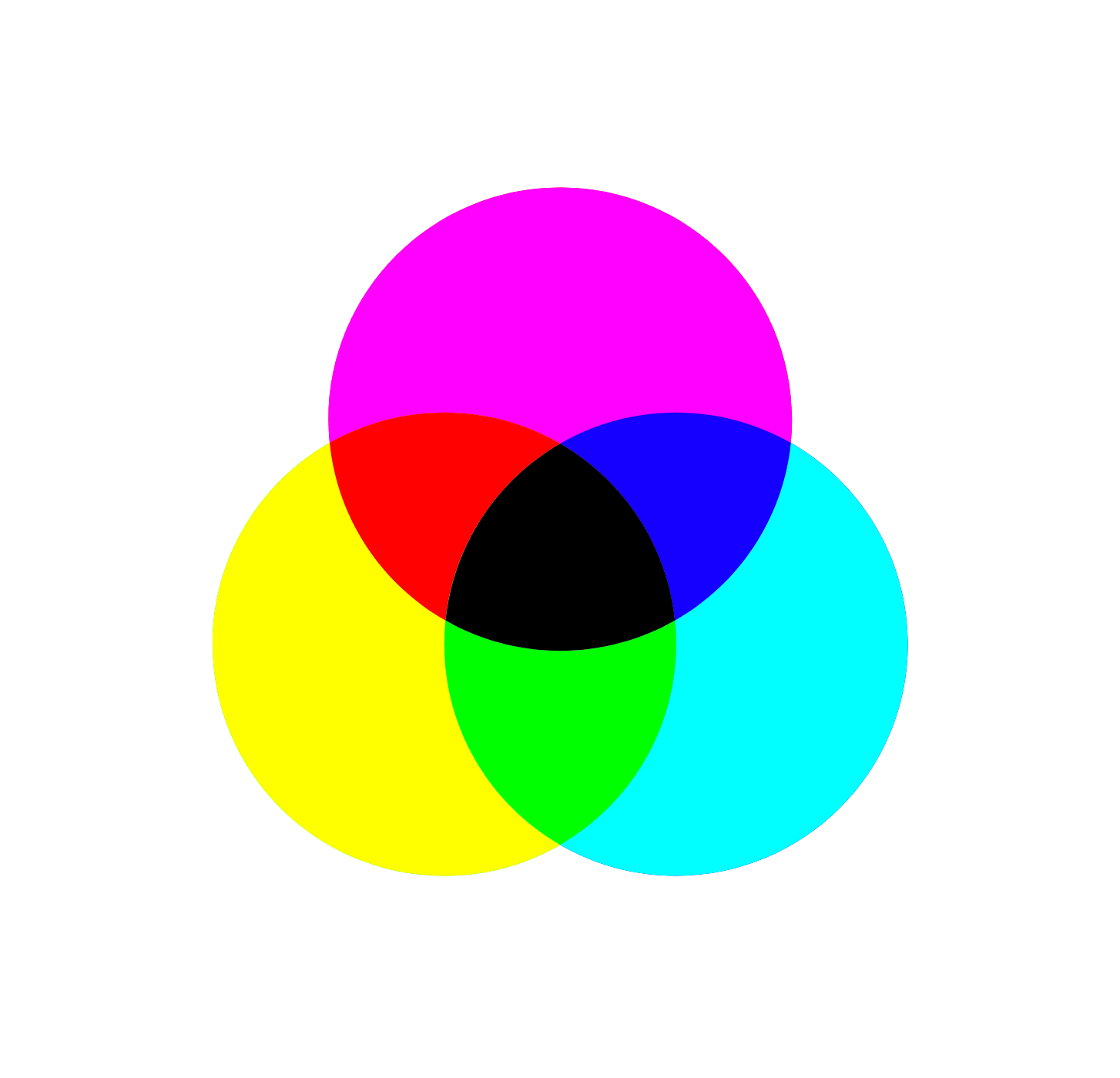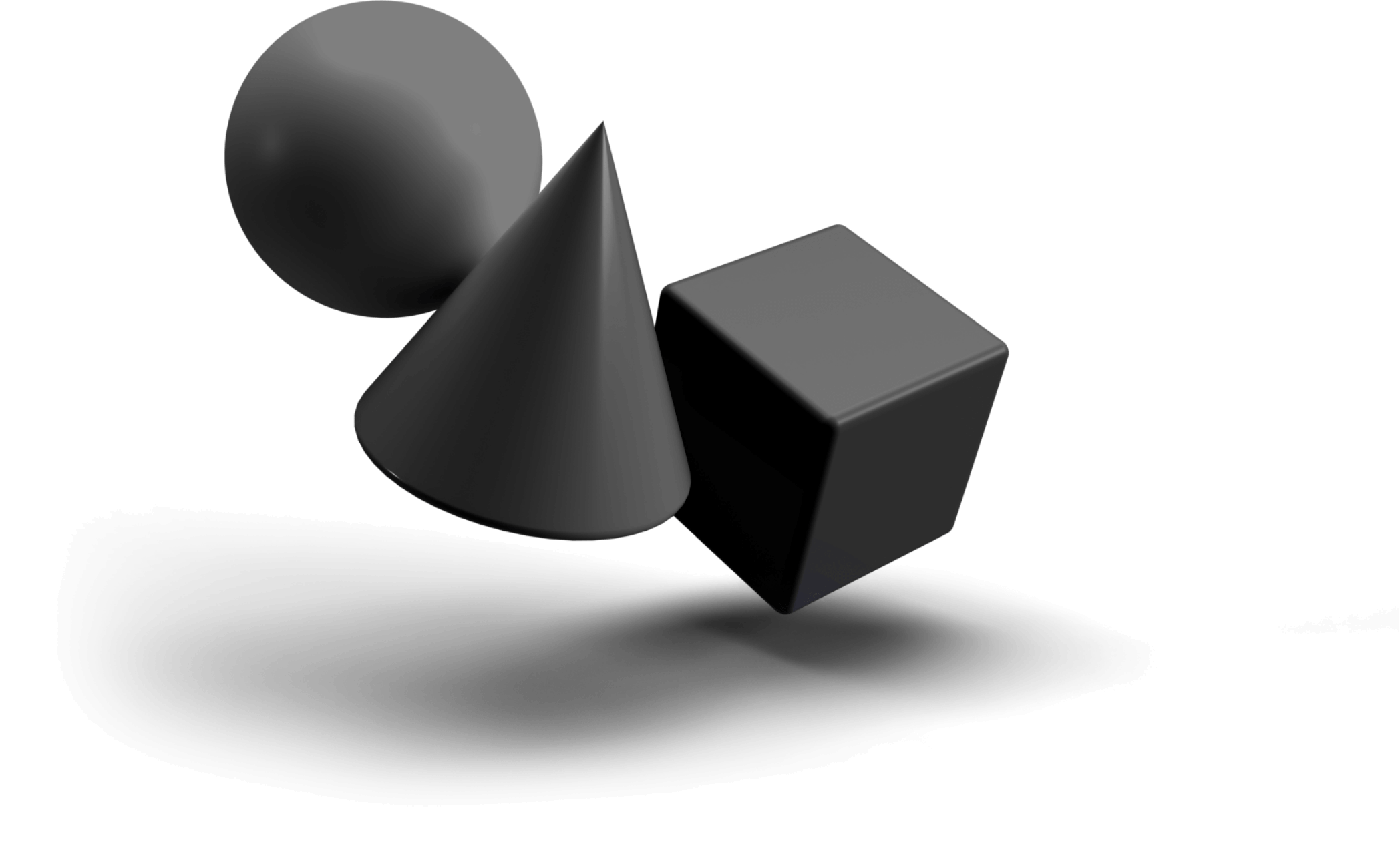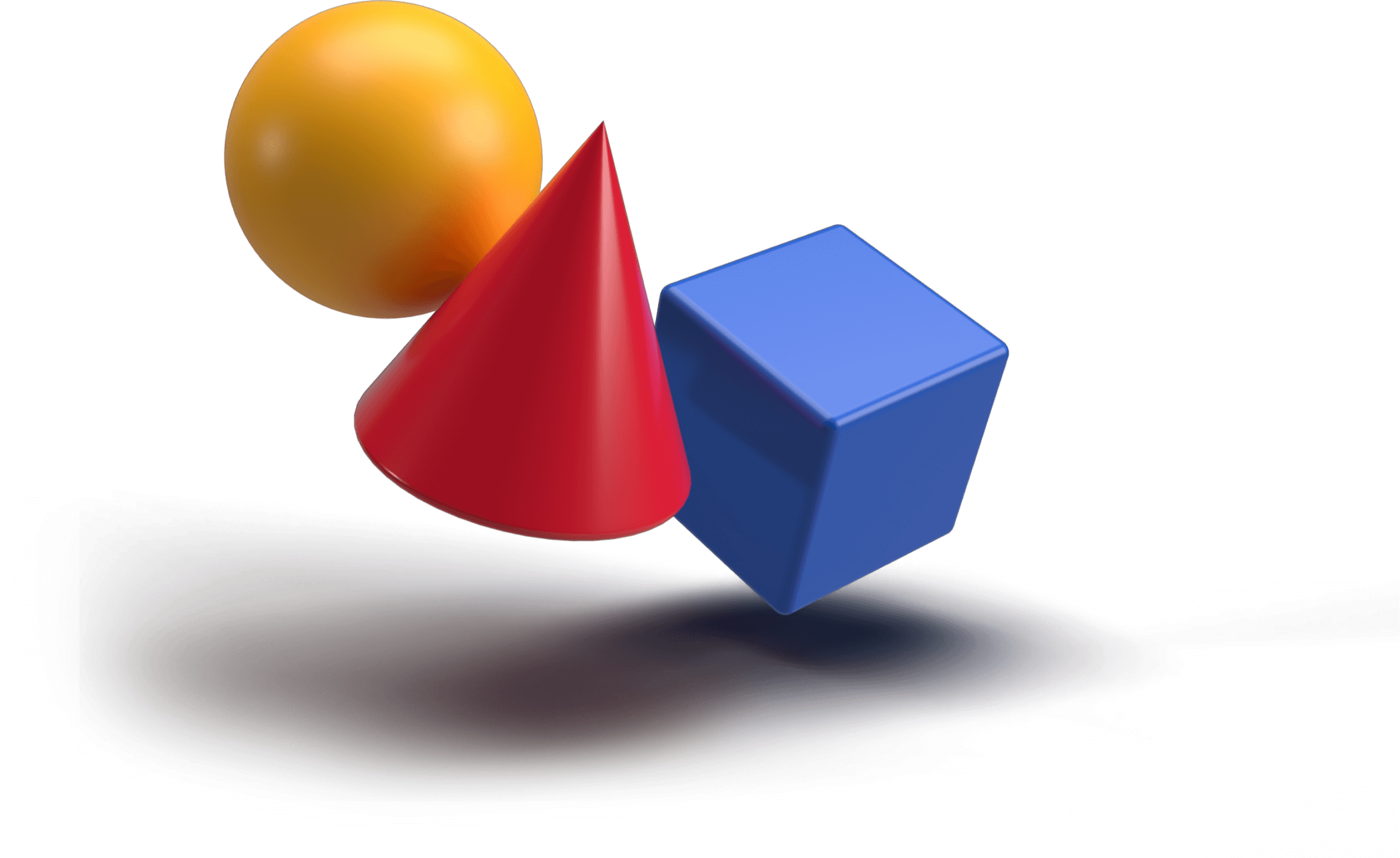Blue light has a shorter wavelength
Green light has a longer wavelength
Red light has the longest wavelength for visible color

 See how it works
See how it works
Explore the visible color spectrum
Light can behave like a wave with properties such as wavelength, frequency, and amplitude, or like a particle with properties like energy and momentum.
Light is characterized by its wavelength, which refers to the successive crests and troughs of a wave of light.
The wavelength of light visible to humans ranges from short at about 400 nanometers (nm) for violet light to long at about 700 nm for red light.
See how different wavelengths correspond to various perceived colors.
